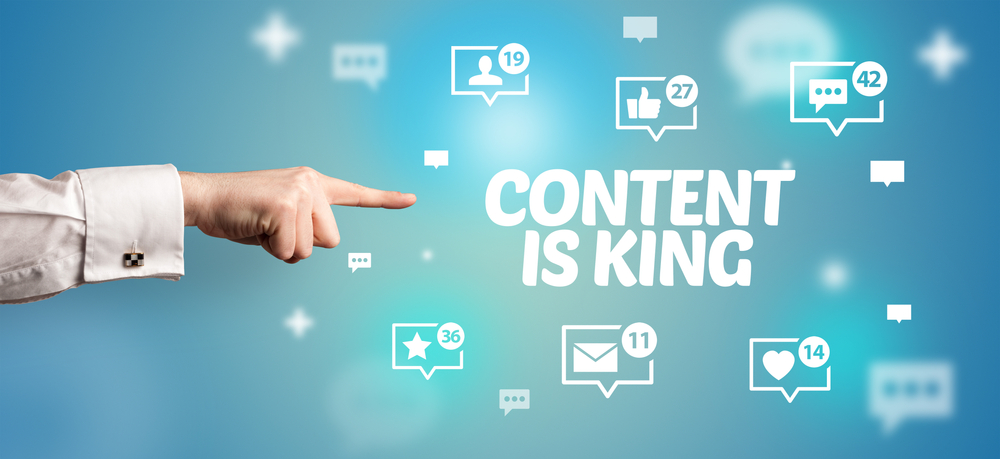Digital marketing content has evolved rapidly over the last decade, shifting from simple banner ads to sophisticated strategies powered by AI, data analytics, and personalized experiences. Among all the elements shaping this evolution, content in digital marketing remains the cornerstone. As we move into an even more connected and data-driven future, content will continue to adapt, grow, and innovate—reshaping how brands communicate and engage with audiences.
The Current Role of Content in Digital Marketing
Content is no longer just about blog posts or static website pages. It’s podcasts, short-form videos, webinars, interactive tools, infographics, voice search snippets, and much more. Successful brands have learned that content isn’t just a part of the marketing strategy—it is the strategy. Today’s consumers are flooded with information. To stand out, businesses must offer valuable, relevant, and engaging content across various platforms. The way audiences consume information has changed drastically, and businesses that adapt their content accordingly are the ones thriving.
Personalization: The Future of Targeted Content
One of the biggest trends shaping the future of content in digital marketing is personalization. With tools powered by AI and machine learning, marketers now have the ability to tailor content to individual users based on their behavior, preferences, and demographics. Instead of broadcasting a generic message to thousands, brands are beginning to deliver unique, one-on-one content experiences. From personalized email campaigns to curated product recommendations, the ability to connect on a deeper level is revolutionizing engagement.
What This Means for Marketers: Creating content that feels tailored will become non-negotiable. Understanding customer personas and behaviors will be crucial for crafting relevant content that converts.
The Rise of AI-Generated and Assisted Content
Artificial Intelligence is transforming how content is created, optimized, and delivered. AI tools like ChatGPT, Jasper, and others are helping marketers generate content faster than ever before. These tools can write articles, suggest topics, improve SEO, and even analyze audience reactions in real time. However, the future isn’t about replacing human writers—it’s about collaboration. AI can handle data-heavy tasks and repetitive writing, while human creators add creativity, empathy, and brand voice.
Takeaway: Brands that embrace AI while maintaining a human touch in their content will lead the next wave of digital marketing innovation.
Voice and Visual Content Are Leading the Way
With the increasing popularity of smart speakers and visual content marketing platforms like TikTok and Instagram Reels, content formats are changing. Voice search is reshaping how content is written, while short-form video content is becoming a powerful storytelling tool. Consumers prefer quick, easy-to-digest content. Instead of reading a 1,000-word article, many users now turn to a 30-second video or ask Alexa for a quick answer. This shift is influencing not just the type of content, but also how it’s optimized and delivered.
Action Point for Marketers: Invest in voice-optimized and video-first content strategies. Use storytelling techniques that fit short formats while delivering clear, memorable messages.
Interactive and Immersive Content Experiences
The future of content also includes immersive technologies like Augmented Reality (AR), Virtual Reality (VR), and interactive design. Brands like IKEA and Sephora already use AR to let users “try” products before buying. These experiences create deeper emotional connections and drive purchase decisions. Interactive quizzes, calculators, and 360-degree product views are just the beginning. As technology advances, the line between content and experience will continue to blur.
Insight: The more interactive and immersive your content, the more memorable it becomes. Audiences are more likely to engage with content they can explore, touch, or influence.
Ethical, Transparent, and Value-Driven Content
In the future, consumers will prioritize brands that are authentic, transparent, and purpose-driven. People are tired of misleading clickbait and shallow promises. They want real stories, real impact, and real value. This shift is influencing the tone and direction of content in digital marketing. Brands must focus on building trust, promoting sustainability, and addressing social issues honestly through their content.
Marketers Take Note: Build content around core values. Be transparent about your business practices. Use content to make a positive difference, not just to sell.
Conclusion
The landscape of content in digital marketing is expanding beyond traditional formats and strategies. With advancements in AI, personalization, voice, video, and immersive technologies, content is becoming smarter, faster, and more engaging. Yet, at its core, content is still about connection—real human connection. As we look ahead, one thing is clear: brands that embrace these changes while staying true to their audience’s needs will shape the future of marketing. The tools and formats may change, but great content—valuable, authentic, and human—will always be at the heart of digital success.


